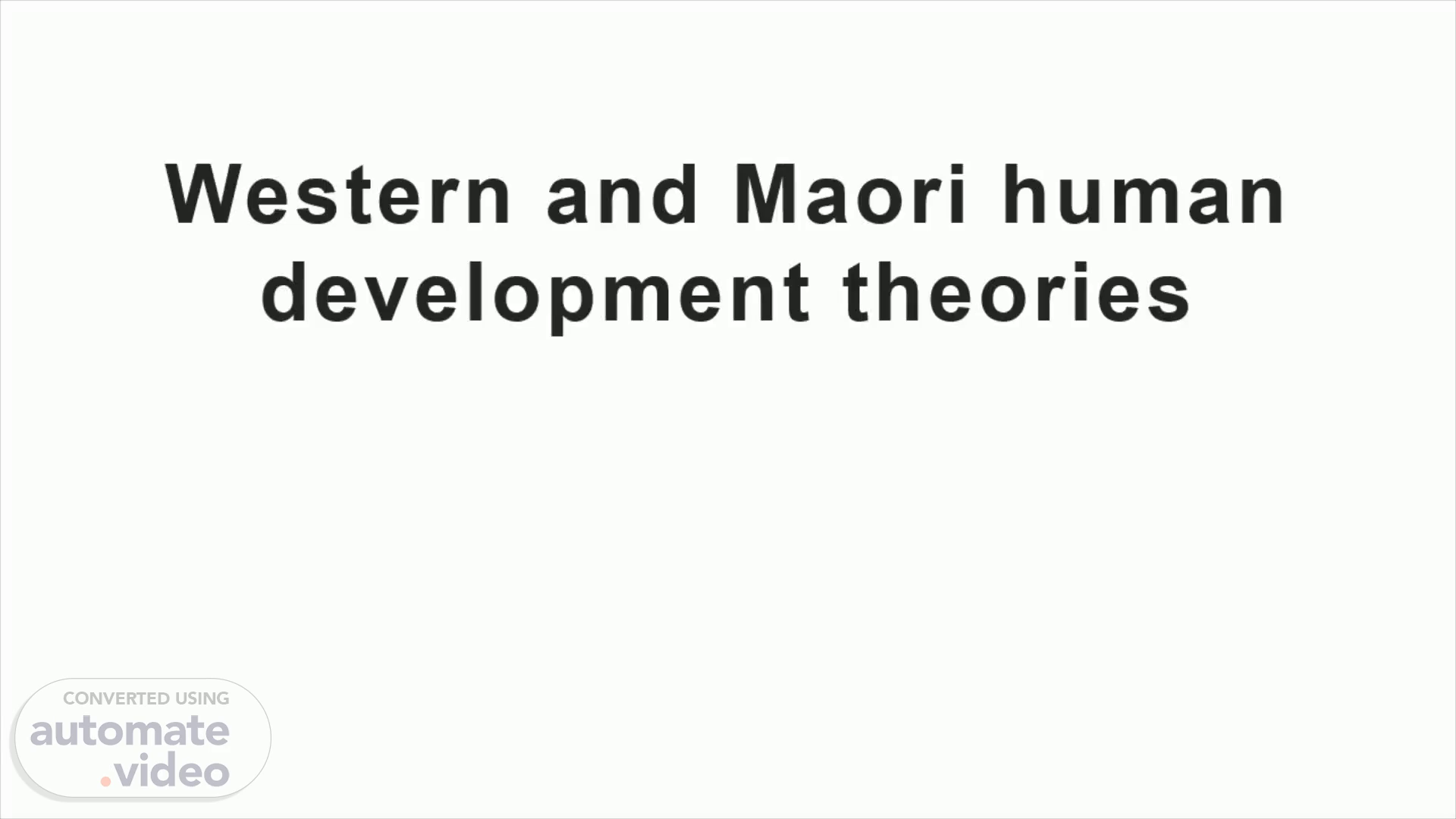
Western and Maori human development theories
Scene 1 (0s)
Western and Maori human development theories. --using sociocultutural theory and Maori learning theory as examples.
Scene 2 (15s)
Introduction. 1 Overview of the two human development theories a) Sociocultural theory b) The Maori learning theory 2 Core concepts for both theories a) Models and the zone of proximal development, the ZPD b) The Poutama and Tuakana/teina 3 Implications and application in social work context a) Design ZPD b) Setting models.
Scene 3 (1m 47s)
Overview. 1 Sociocultural theory a) Interactive social process with cognitive functions(Cherry, 2019) b) Developed within cultural contexts 2 Maori learning theory a)Maori unique worldview (Tangaere, 1997) b)Social structures, whanau, hapu and iwi.
Scene 4 (2m 34s)
The core concepts. 1 Sociocultural theory a) Models: parents, peers, educators and social groups b) The zone of proximal development(the ZPD): ascending levels.
Scene 5 (3m 40s)
The core concepts. (Maximize Learning: Keeping Students in the Zone of Proximal Development, n.d.).
Scene 6 (3m 57s)
The core concepts. 2 Maori learning theory a)Poutama: Maori design, the stairways to realms of knowledge b) Tuakana / teina : learn and teach within whanau, hapu and iwi The poutama design (Taonga, n.d.).
Scene 7 (5m 38s)
The implications. 1 Similar with each other in priciples and rules a) Parents, educators and social groups- tuakana/teina b) The zone of proximal development, the ZPD- The poutama 2 A pplications in cultural conexts a) Cultural differences b) Cultural diverse settings.
Scene 8 (6m 39s)
The Relevance to social work. 1 The ZPD or the poutama design a)Assessment for current learning levels b)Scaffolding, hints and prompts to guide clients to ascend levels 2 Models setting and interaction a) Finding models for clients b) Interaction with models.
Scene 9 (7m 57s)
References. Cherry, K. (2019, November 26). What Is Sociocultural Theory? Verywell Mind; Verywellmind. https://www.verywellmind.com/what-is-sociocultural-theory-2795088 Maximize Learning: Keeping Students in the Zone of Proximal Development. (n.d.). Good Sensory Learning. https://goodsensorylearning.com/blogs/news/scaffolding-development Royal-Tangaere, A. (1997). Māori Human Development Learning Theory. In P. Te Whaiti, M. Mc Carthy, & A. Durie, Mai i rangiatea (pp. 47-58). Auckland New Zealand: Auckland University Press. Taonga, N. Z. M. for C. and H. T. M. (n.d.). Types of tukutuku designs. Teara.govt.nz. Retrieved March 22, 2022, from https://teara.govt.nz/en/interactive/43489/types-of-tukutuku-designs.